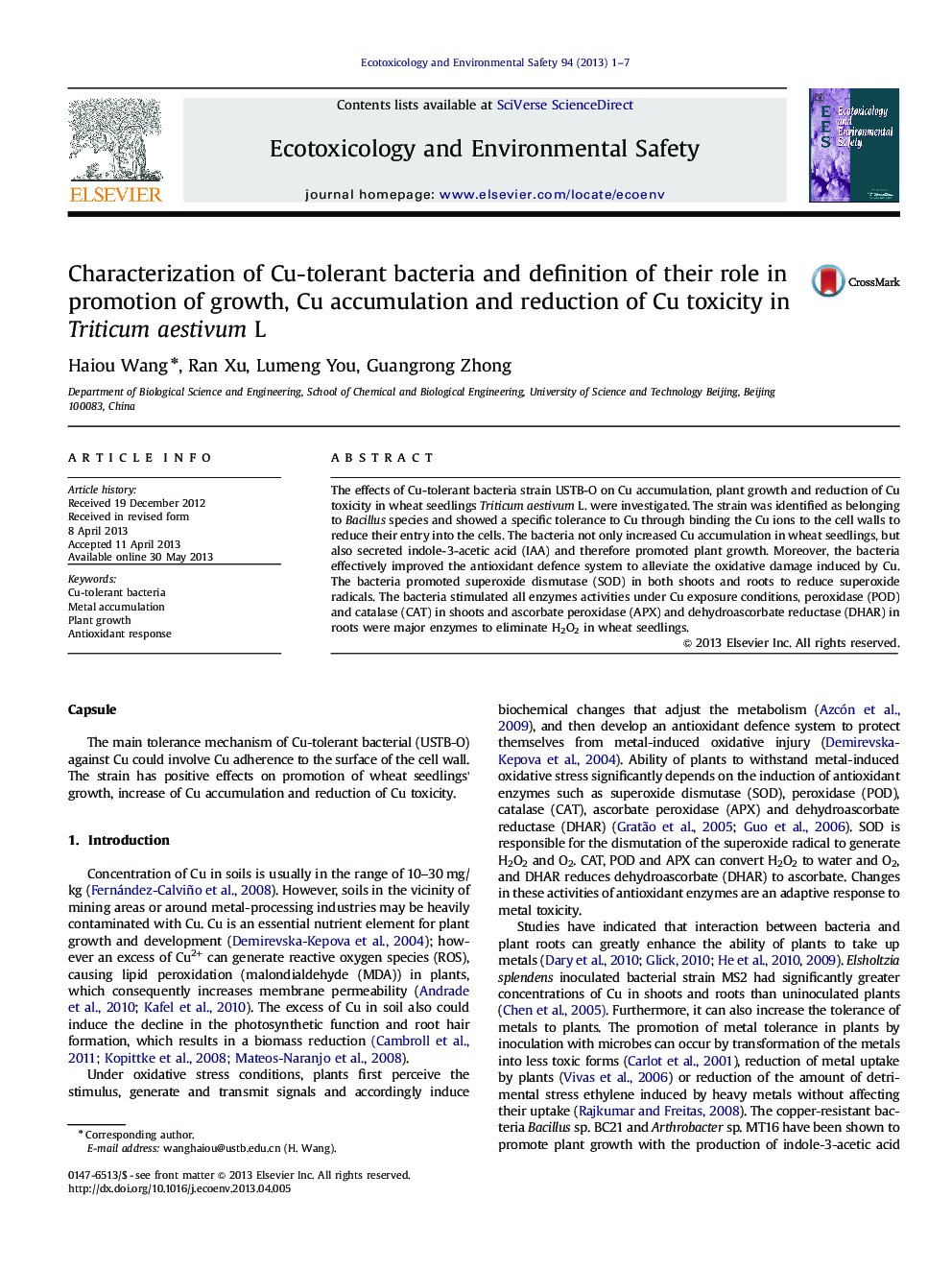| Article ID | Journal | Published Year | Pages | File Type |
|---|---|---|---|---|
| 4420476 | Ecotoxicology and Environmental Safety | 2013 | 7 Pages |
•Cu-tolerant strain can bind the Cu ions to the cell walls to reduce Cu toxicity.•The bacteria increased Cu accumulation in wheat seedlings.•The bacteria promoted plant growth due to secreting indole-3-acetic acid (IAA).•The bacteria could alleviate the oxidative damage induced by Cu.•The bacteria effectively improved the antioxidant defence system.
The effects of Cu-tolerant bacteria strain USTB-O on Cu accumulation, plant growth and reduction of Cu toxicity in wheat seedlings Triticum aestivum L. were investigated. The strain was identified as belonging to Bacillus species and showed a specific tolerance to Cu through binding the Cu ions to the cell walls to reduce their entry into the cells. The bacteria not only increased Cu accumulation in wheat seedlings, but also secreted indole-3-acetic acid (IAA) and therefore promoted plant growth. Moreover, the bacteria effectively improved the antioxidant defence system to alleviate the oxidative damage induced by Cu. The bacteria promoted superoxide dismutase (SOD) in both shoots and roots to reduce superoxide radicals. The bacteria stimulated all enzymes activities under Cu exposure conditions, peroxidase (POD) and catalase (CAT) in shoots and ascorbate peroxidase (APX) and dehydroascorbate reductase (DHAR) in roots were major enzymes to eliminate H2O2 in wheat seedlings.
